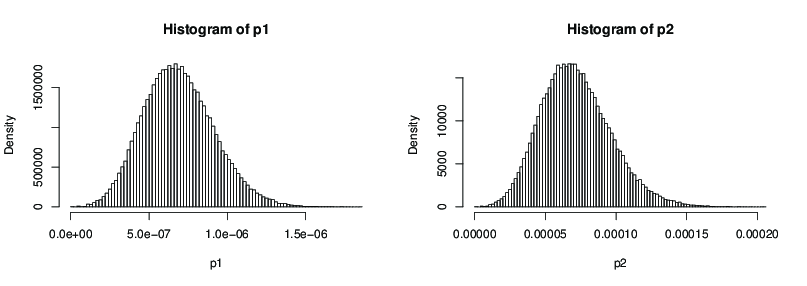I am trying to write a Monte Carlo simulation in R and I am really stuck! I want to know the probability distribution of a random person in the UK becoming ill from eating a cooked 100g piece of chicken.
I have the following information: out of 1000 pieces of chicken tested 20 had bacteria in question and I have data for the $\log_{10}$ counts of these 20 pieces, I also have min and max $\log_{10}$ counts (0.1 and 3.0). I also know the average person in UK eats 2 x 100g portions of chicken a week. The model for risk of illness given an ingested number of the bacteria is predicted by $R=1-\exp(-aD)$ where $D$ is the ingested number of organisms and I have a value for $a$.
I can write basic Monte Carlo simulations but I am struggling with the start of this one as I can't get my head around the model being ingested bacteria and the question being risk from eating a 100g portion.
- Is my first step here to obtain the CDF?
- And what is the distribution I should use?

